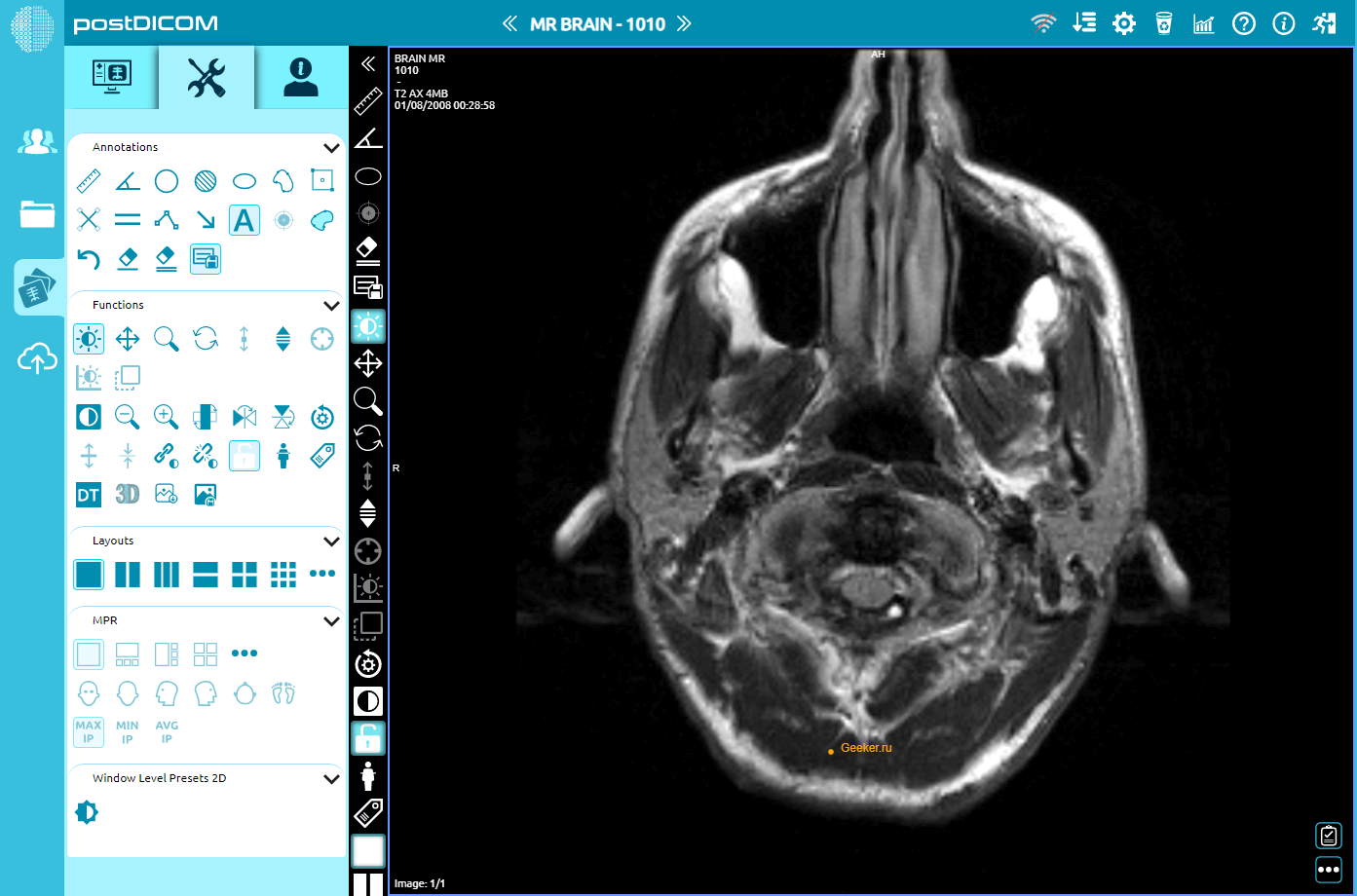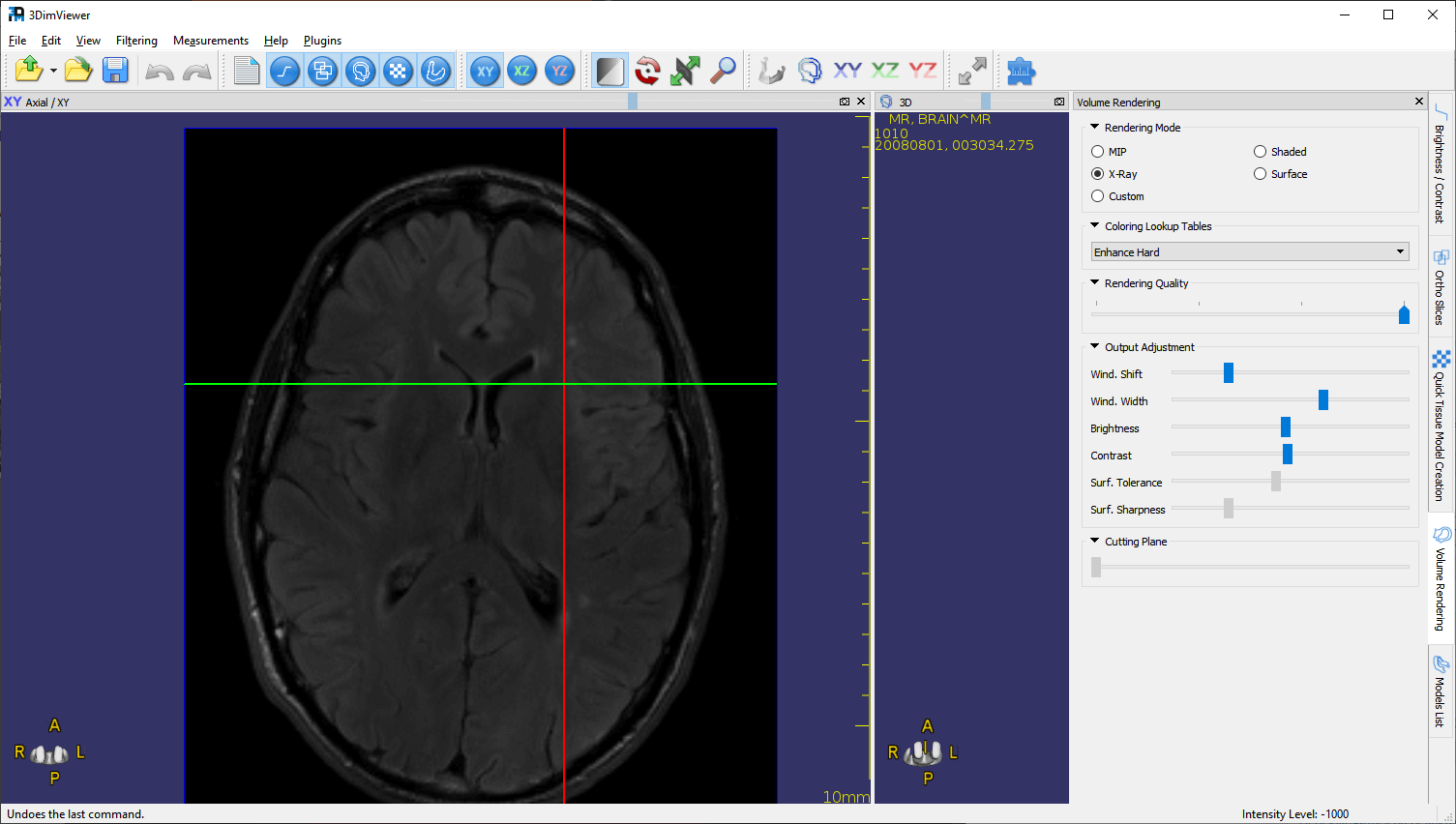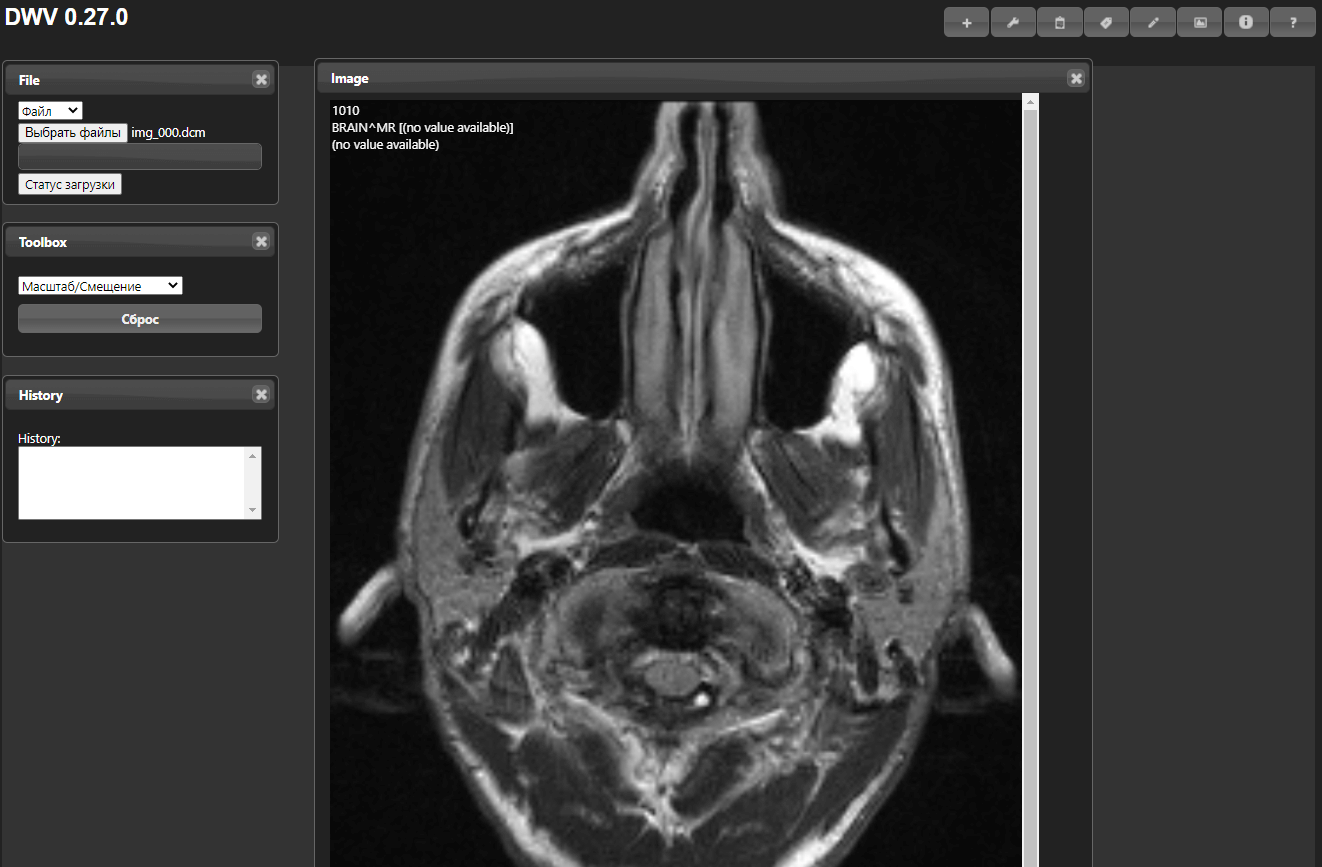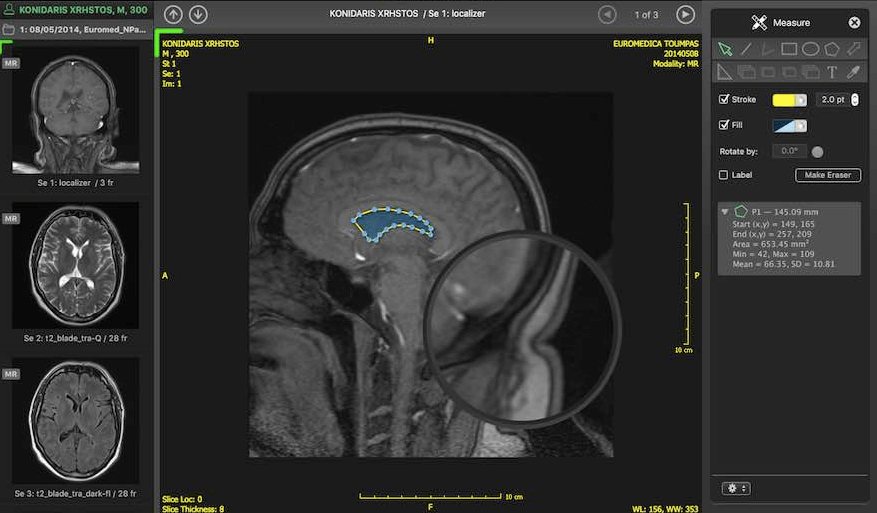DICOM is an international file format and network communication protocol developed by the American College of Radiology specifically for medical imaging. It allows healthcare professionals to view, store, and share medical images that also contain patient data and are often stored in a large database called a PACS.
There are hundreds, if not thousands, of programs for viewing, editing, and otherwise manipulating DICOM and other medical image formats. This list is far from exhaustive. The programs are listed in no particular order.
PostDICOM
Service PostDICOM is compatible with Windows, MacOS and Linux. It can be controlled from an Android and iOS smartphone. PostDICOM comes with a cloud-based PACS that allows you to access data from any device, anywhere, anytime.
At first it may seem that the service is not suitable for an ordinary user who just wants to view his photo, but it is enough to register and confirm your email to be able to download a .dcm file (or a whole folder) and view it. It's all very simple.
The system enables 3D reconstruction, 3D rendering and MIP, as well as fusion. It also offers an interface for creating reports, sharing files and immediately uploading all patient data to the PACS cloud system.
Radiant
RadiAnt DICOM — is a simple and fast program that runs on Windows. It offers many functions, including MPR, MIP and merging. Images can be exported to JPEG, PNG and other formats. For home use, it is enough to get a trial version, which is done automatically immediately after its installation on the computer, you do not even need to register. The paid version costs only 5 euros per month.
The program only allows viewing, there are no editing functions. The developer's website has a disclaimer, which clearly states that they do not have any certificates, and therefore the product is not intended for use in diagnostics. However, it will be convenient for students to study medical images.
3DimViewer
Thanks to the user-friendly interface in 3DimViewer easy to understand. The program can display 3D rendering profiles, including multiplanar and orthogonal reconstructions, but it excels at thresholding tissue segmentation in both volumes and surfaces. Volumes require a powerful graphics processor, so don’t try to open them on older computers or even newer models with integrated graphics.
Support for installation on Macintosh, Windows and Linux make the program one of the most versatile in its field. Thanks to the open source C++ code, programmers (if you have them) can integrate 3DimViewer with other programs or otherwise customize it for your system. 3DimViewer is intended only for viewing - there are no editing tools in it. Only adjustment of brightness, contrast, etc.
DICOM Web Viewer
DWV is an online program for viewing medical images, written in Javascript and HTML5, meaning it will work with almost all modern browsers, on almost any device, including laptops, tablets, phones, and even some smart TVs. With a little bit of code modification, the program can be embedded into any PACS server that supports the WADO protocol, or provide access to images via a URL.
The system is mainly for viewing only, there are no great editing capabilities other than drawing shapes. The applied drawings can be edited. There is Livewire, a semi-automatic segmentation tool that draws a line along the intensity boundary.
By this link the wiki project will open and you can view the demo versions Here. You need to know how to code to successfully implement the GitHub version, but DWV can also be installed as a regular Chrome extensions, Google Drive app or WordPress plugin. All additional information is available on GitHub.
Mango
Mango available in three versions: desktop для Windows, MacOS или Linux, браузерная (для работы требуется последняя версия Java) и версия для iPad. Чтобы браузерная версия работала исправно, нужна будет помощь программистов, не понаслышке знакомых с HTML и JavaScript.
Mango was developed by Jack Lancaster, PhD, and Michael Martinez of the University of Texas Health Science Center. It supports DICOM, NEMA-DES, MINC, and NIFTI formats, as well as VTK, GIFTI, and BrainVisa surface rendering formats. You can even create custom formats and filters.
Mango has a variety of analysis, processing, and editing tools, as well as the ability to convert, anonymize, and register images. Because the project is funded by the National Institute of Mental Health, it has more functionality than many commercial systems.
Escape EMV
EMV способен открыть большинство изображений DICOM с CD/DVD, флеш-накопителей и т. д. Существует в двух версиях: недавно обновленной версии для MacOS и версии для Windows, которая больше не поддерживается. Для работы требуется QuickTime, so the developer stopped supporting the Windows version.
With EMV, you can retrieve research results from other devices by giving the program access to WADO PACS systems. It is possible to process custom objects, such as measurements and annotations.
The program can anonymize and transfer images, and there are many display options, overlays, filters, marks, and color changes. The demo version can be downloaded for free, but commercial use requires a license, which costs 245 euros and is issued for three computers.





